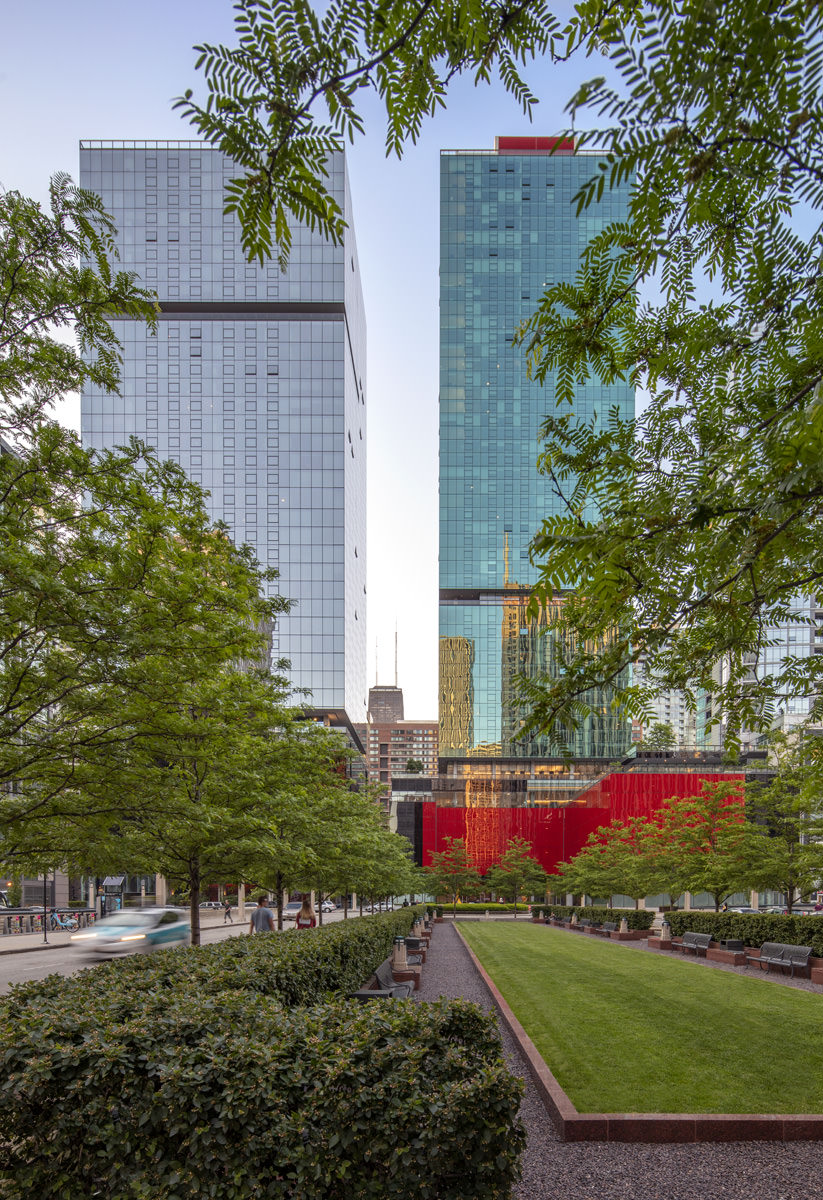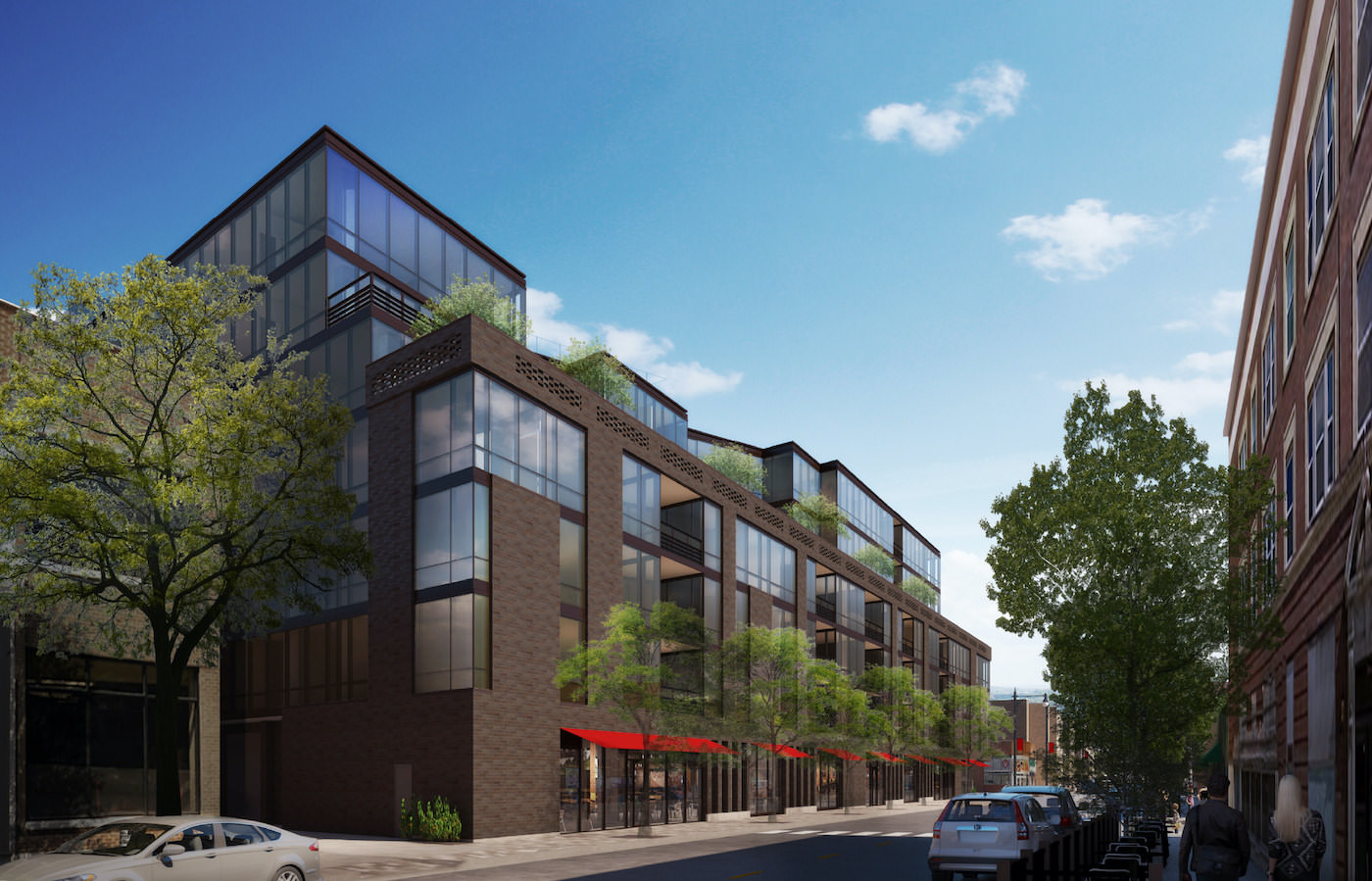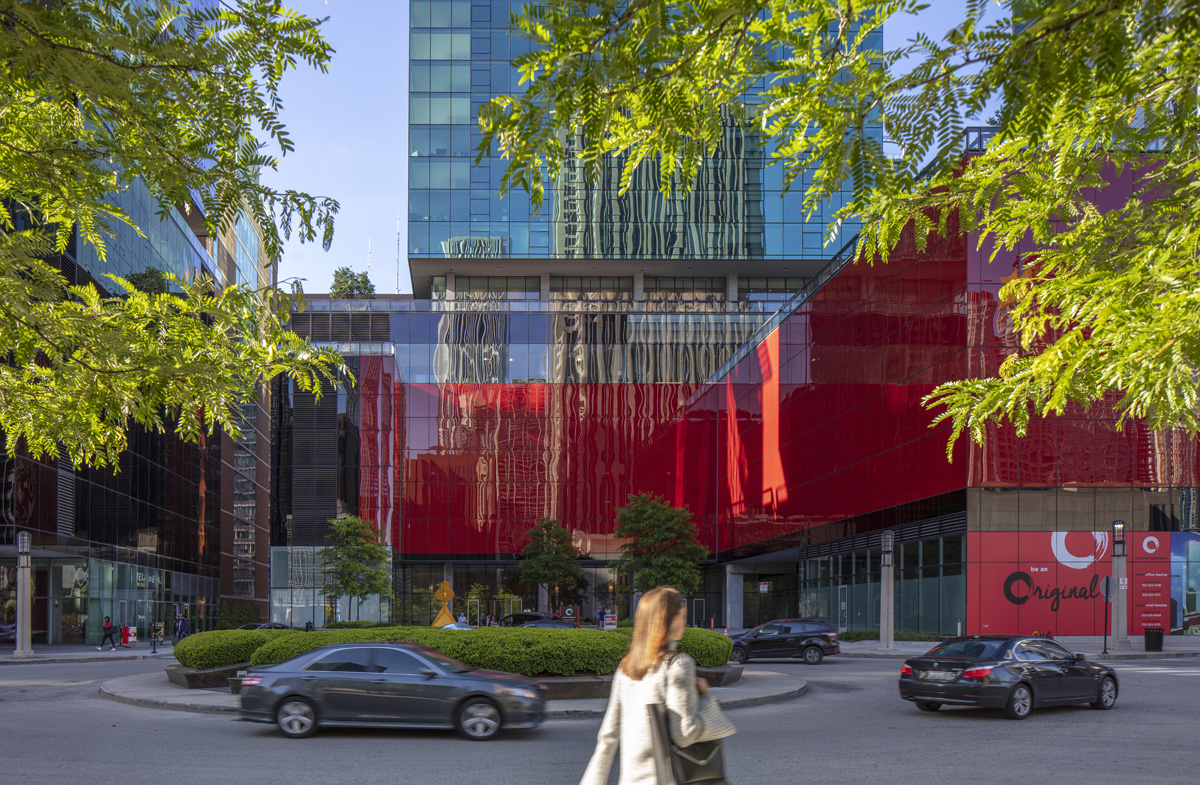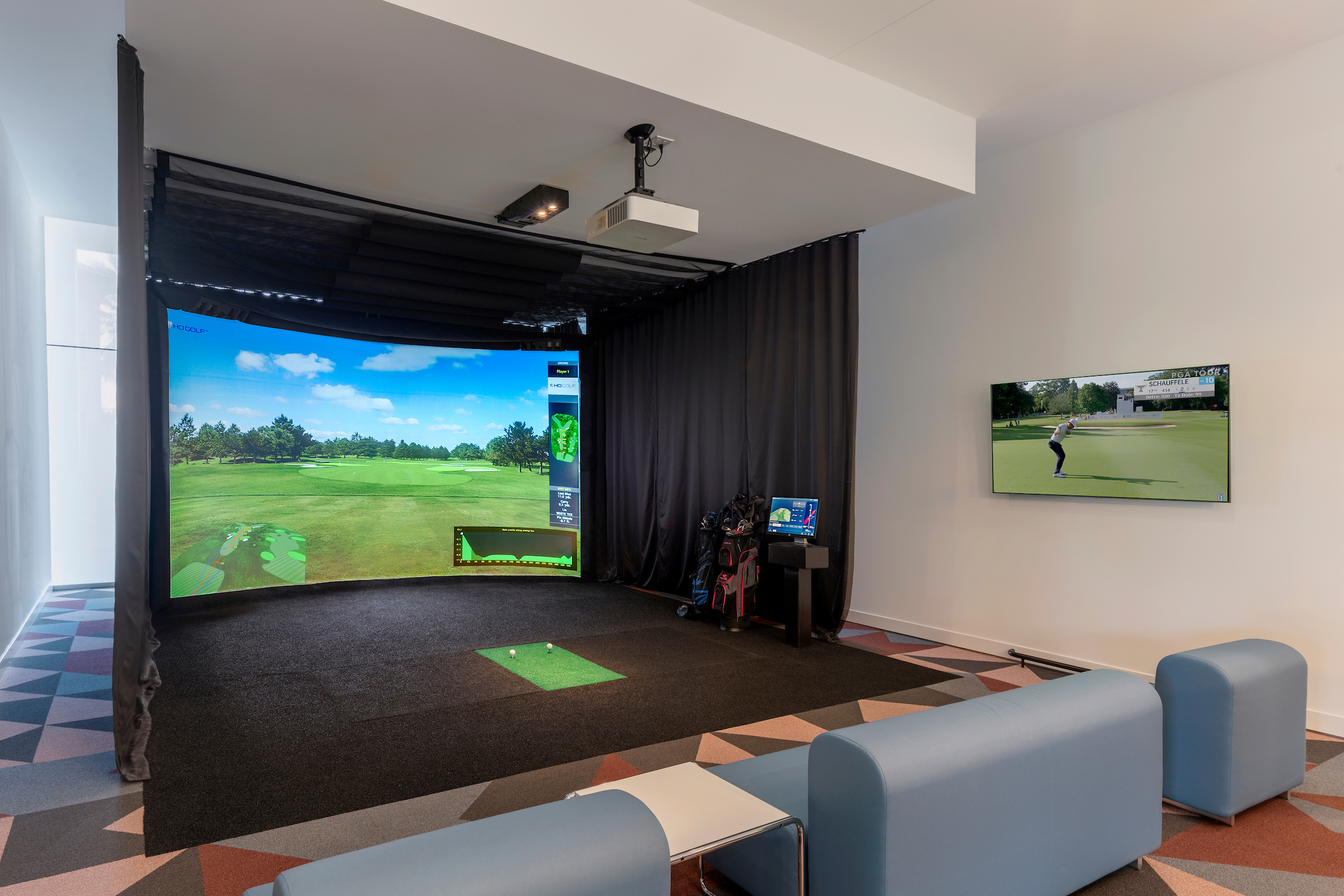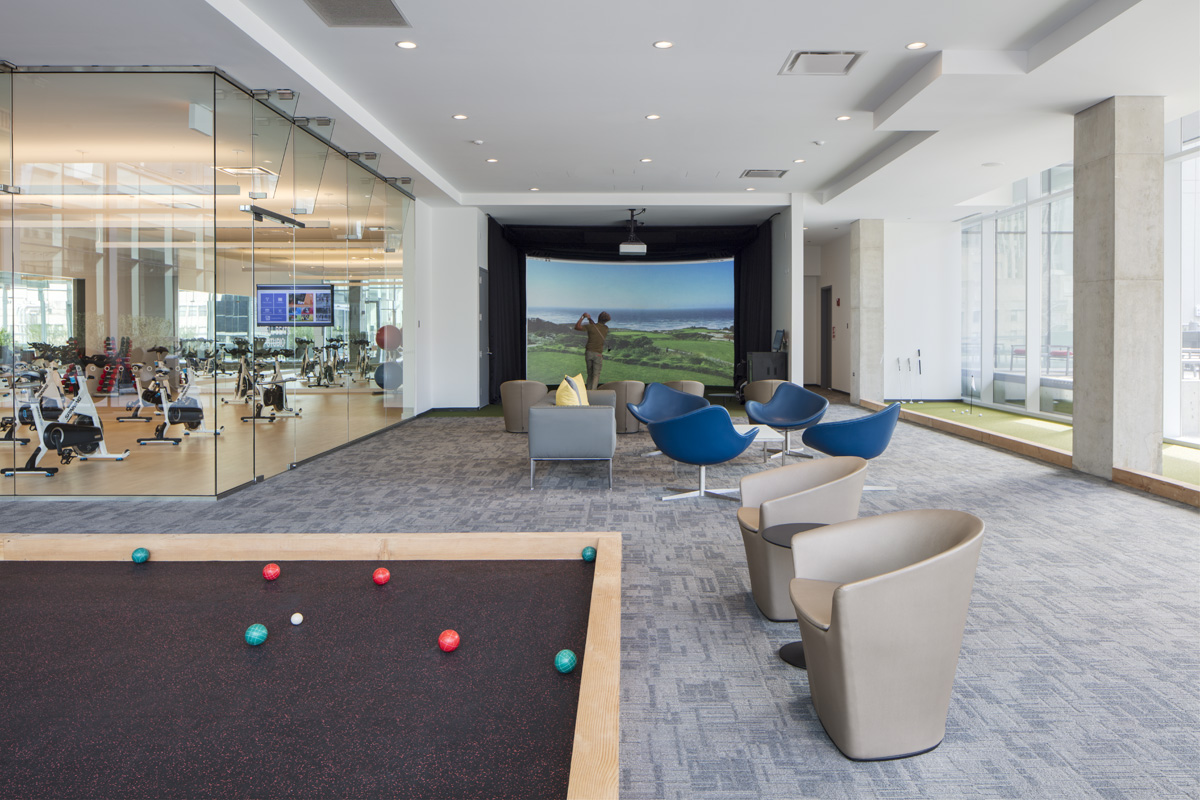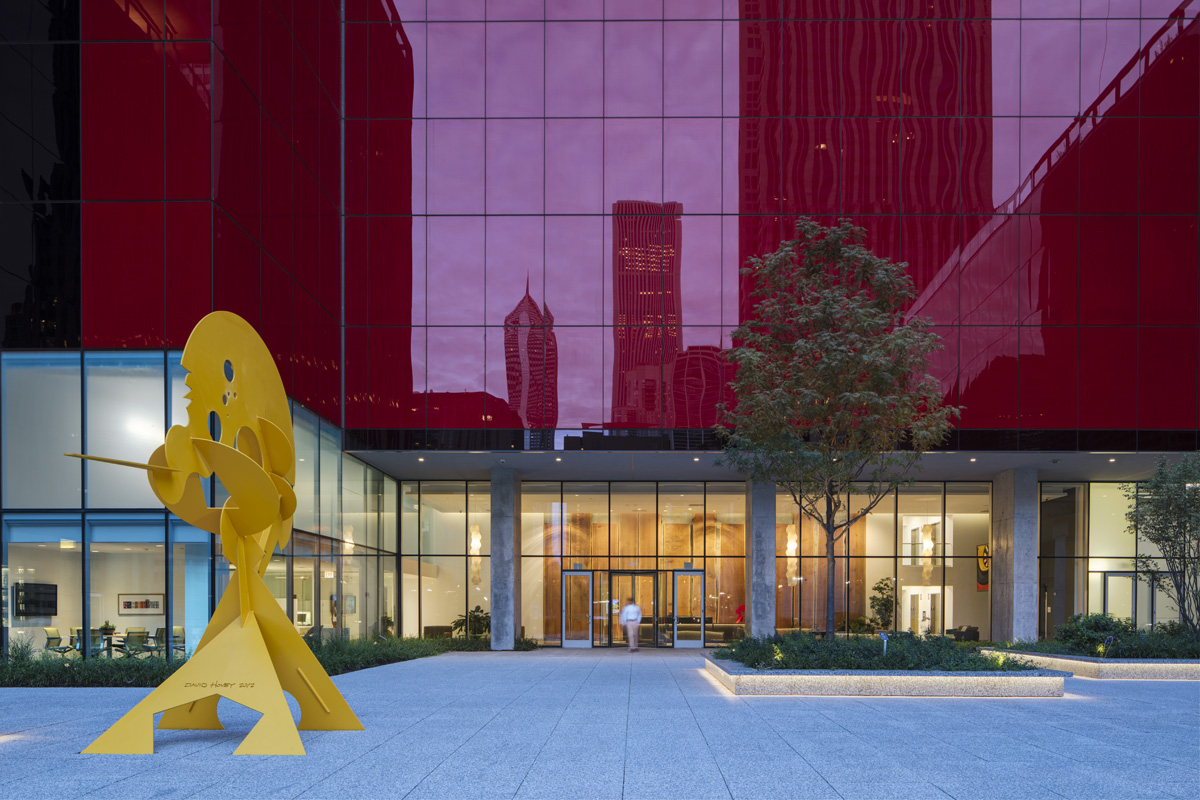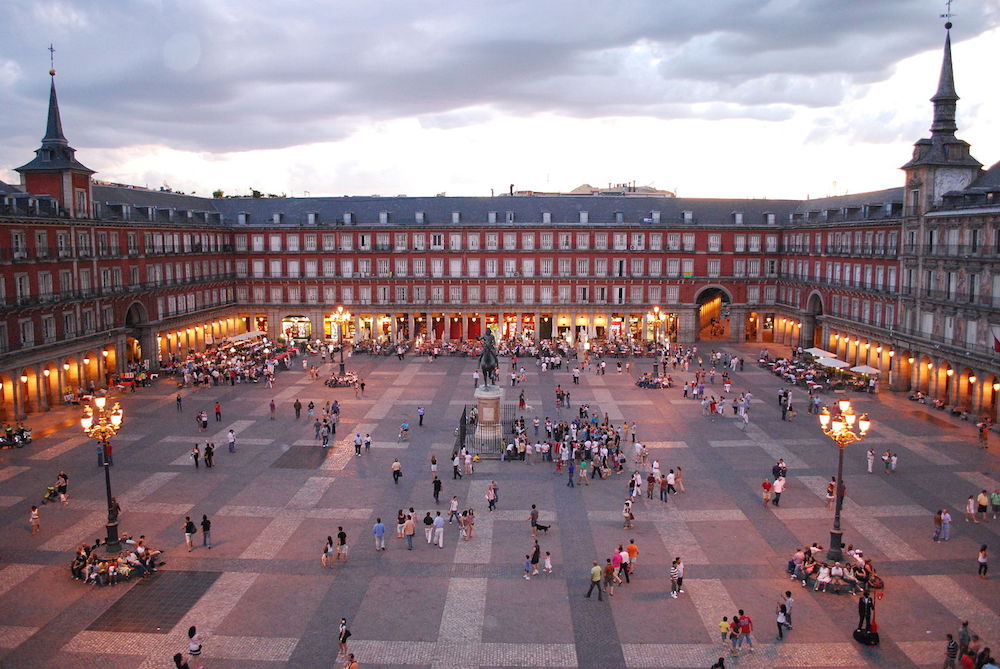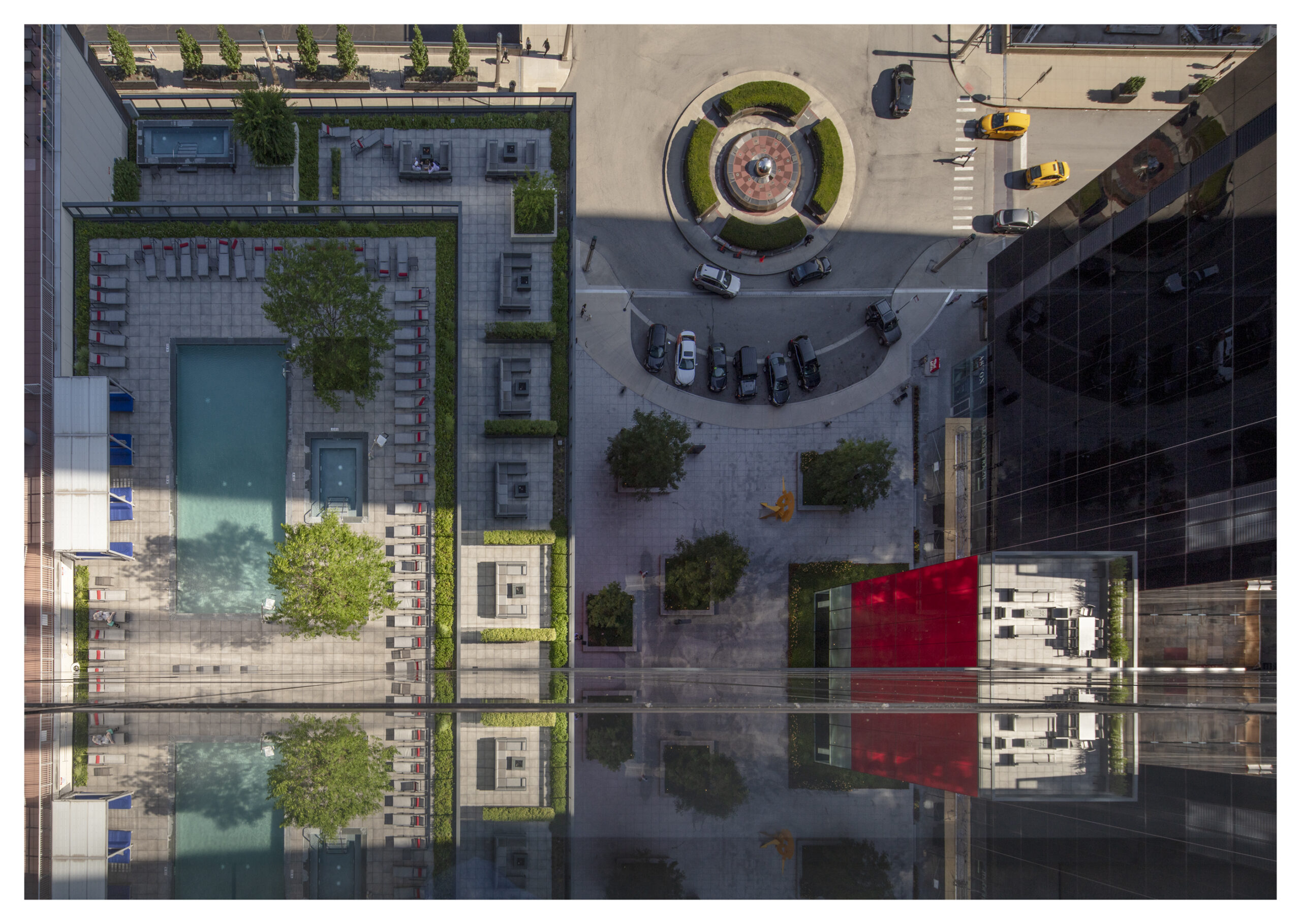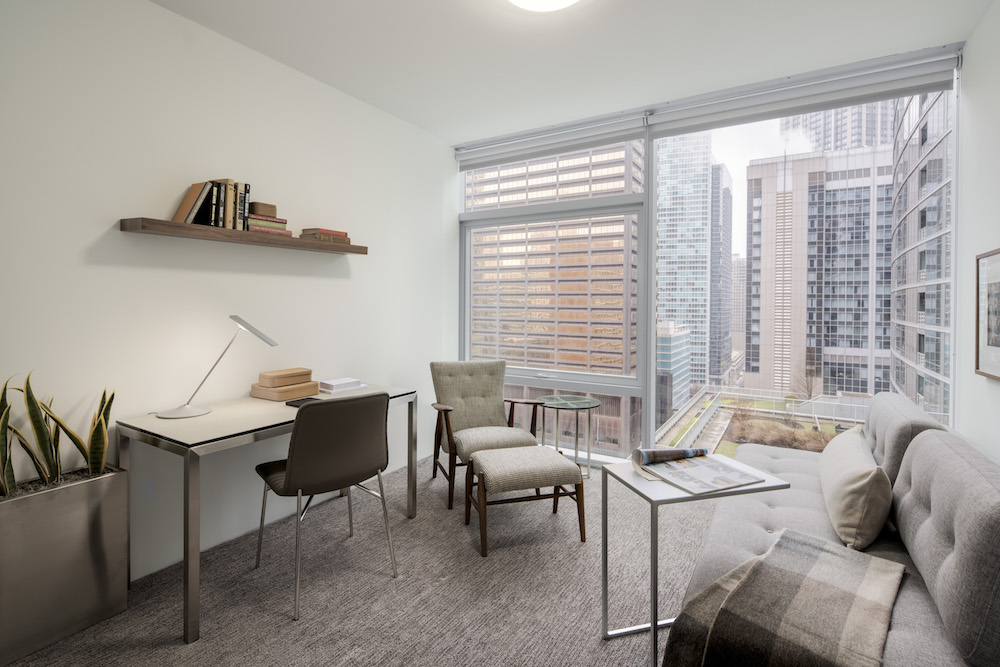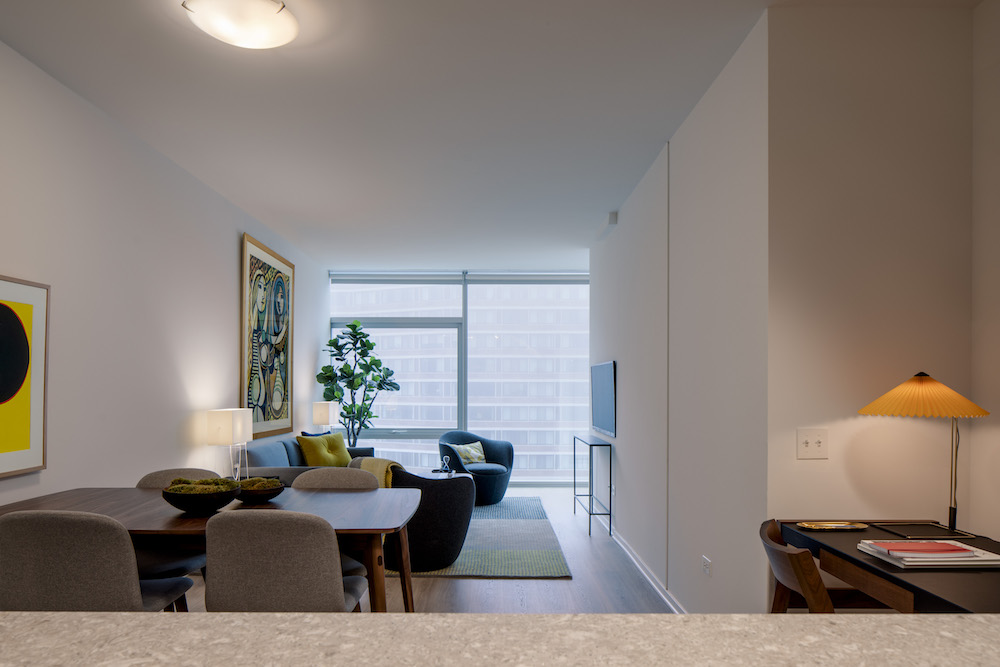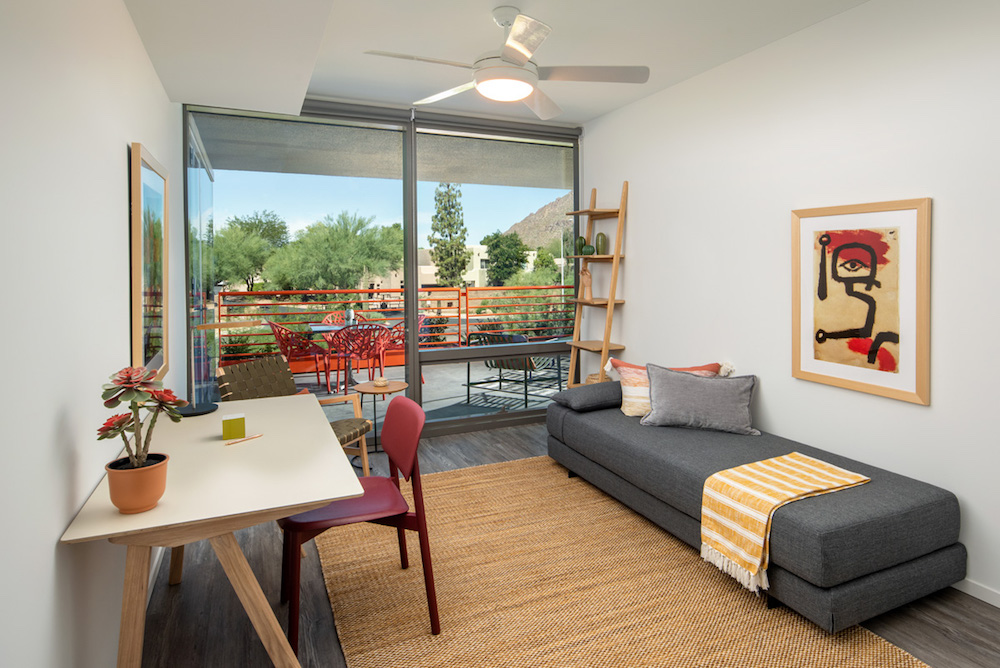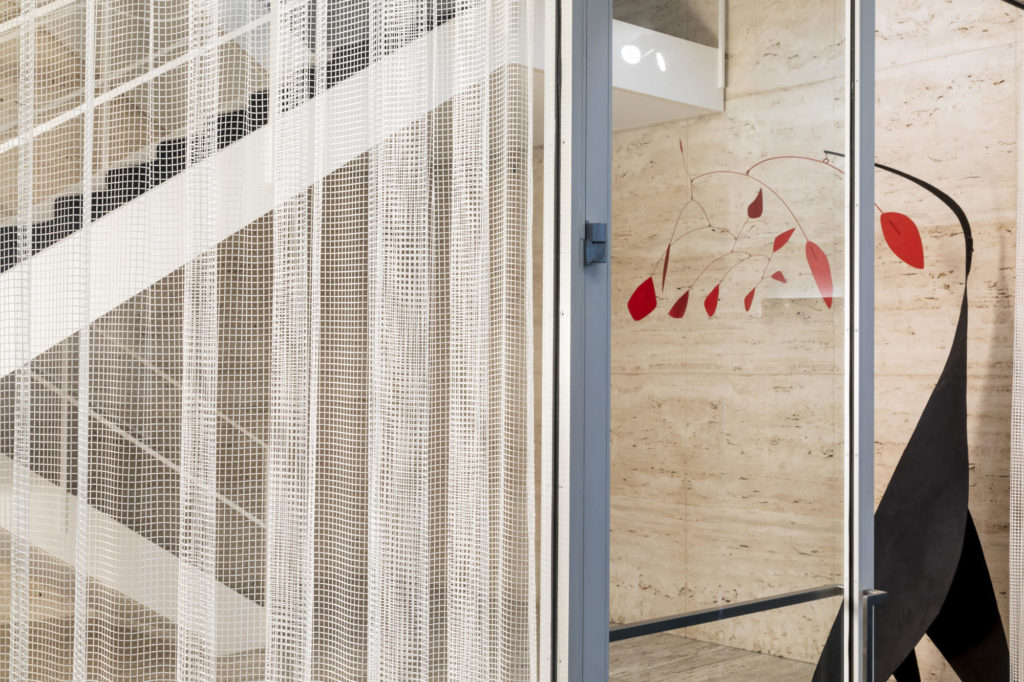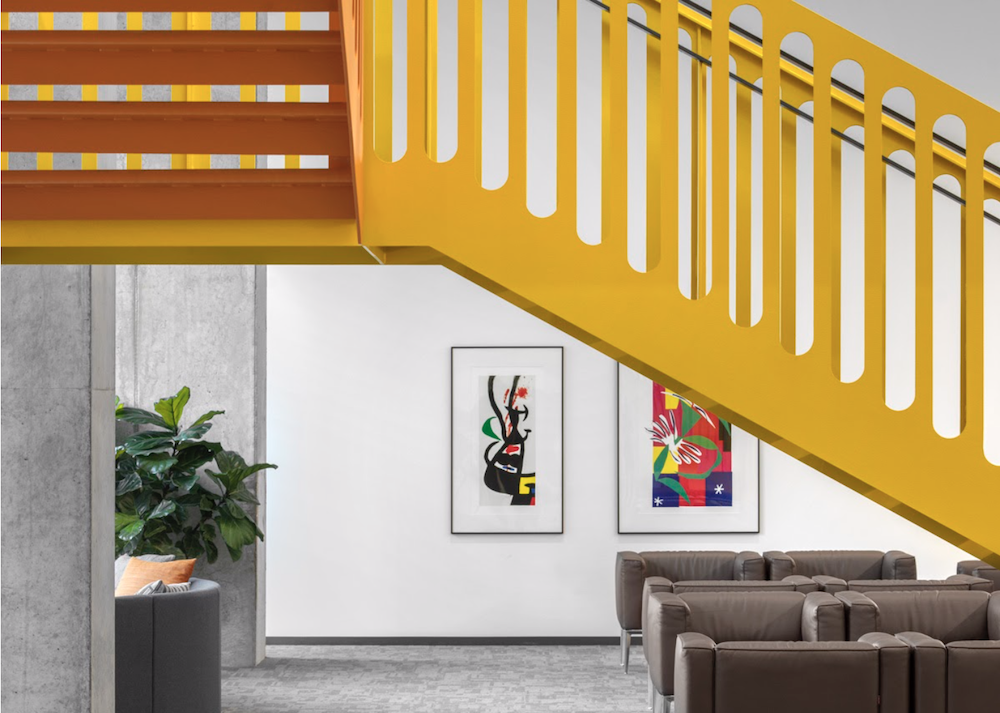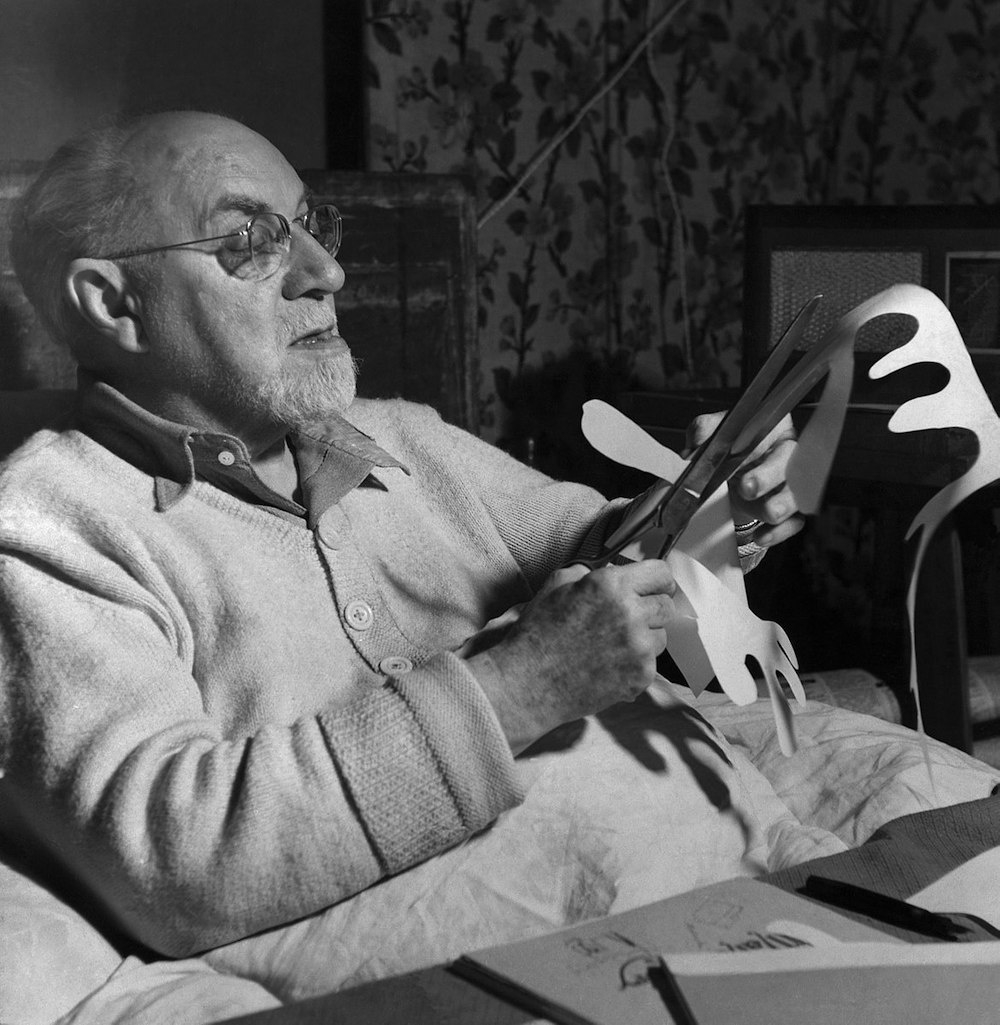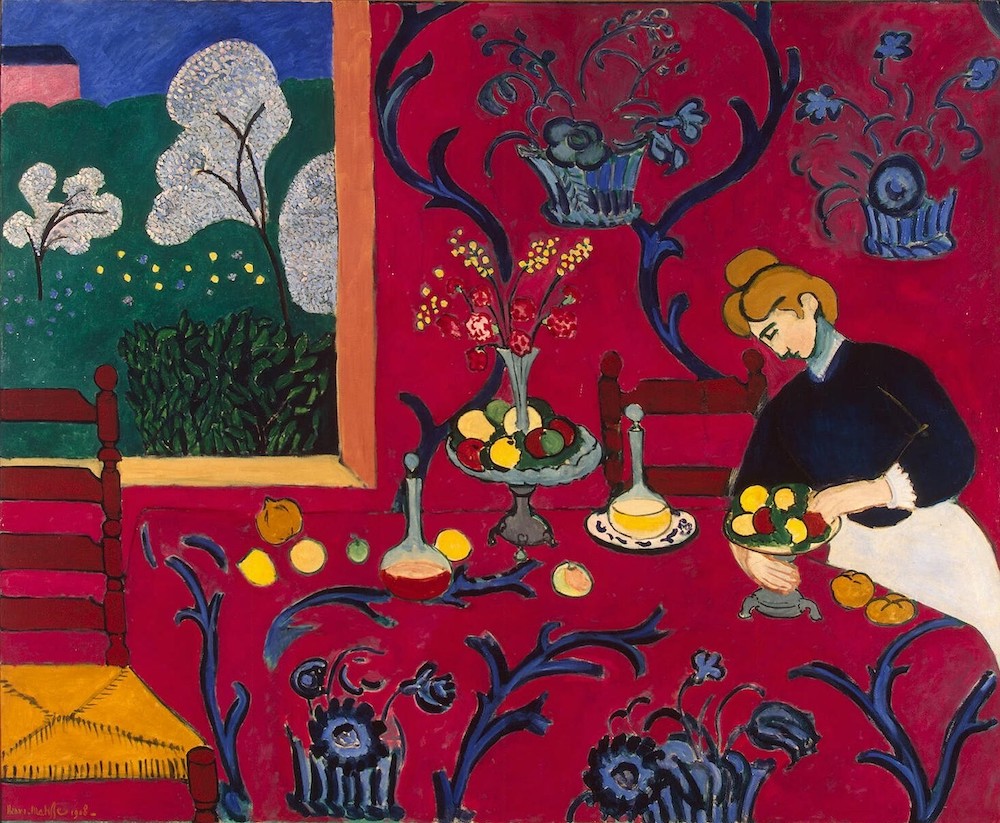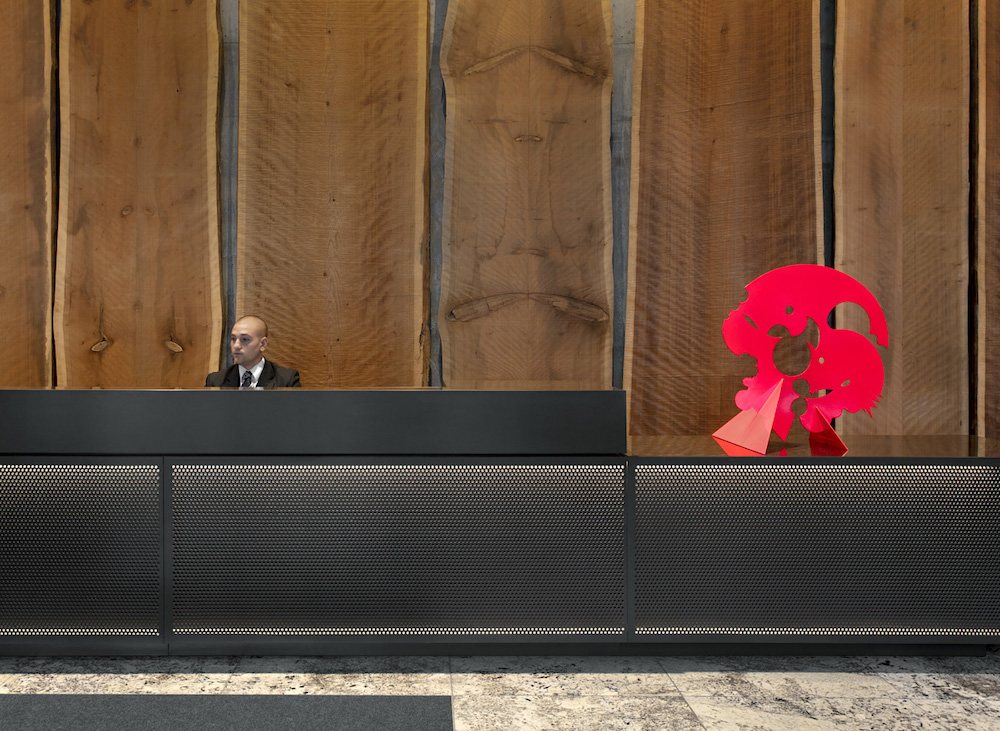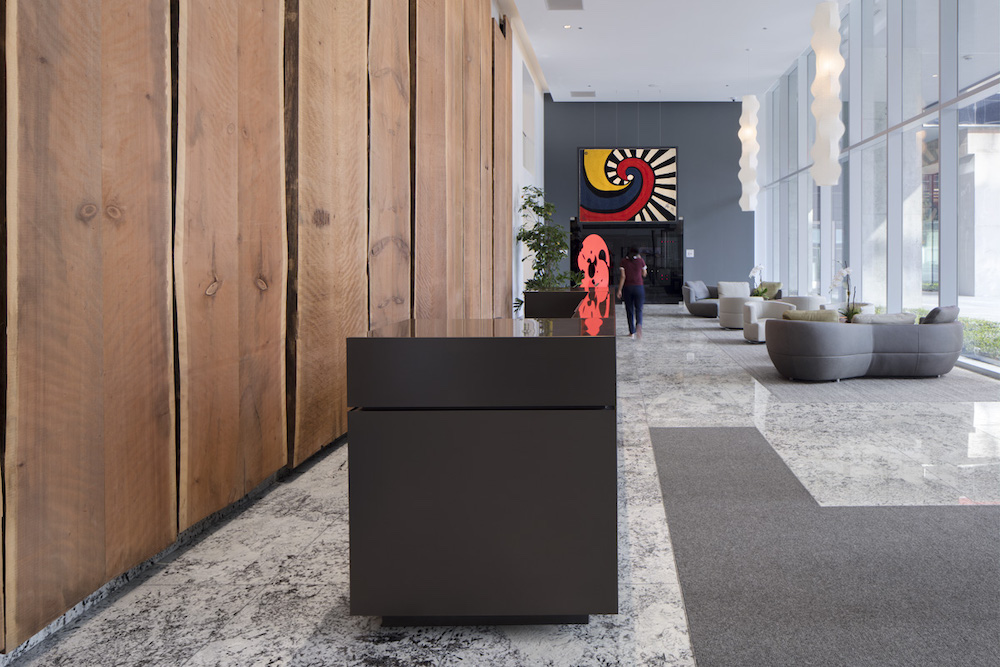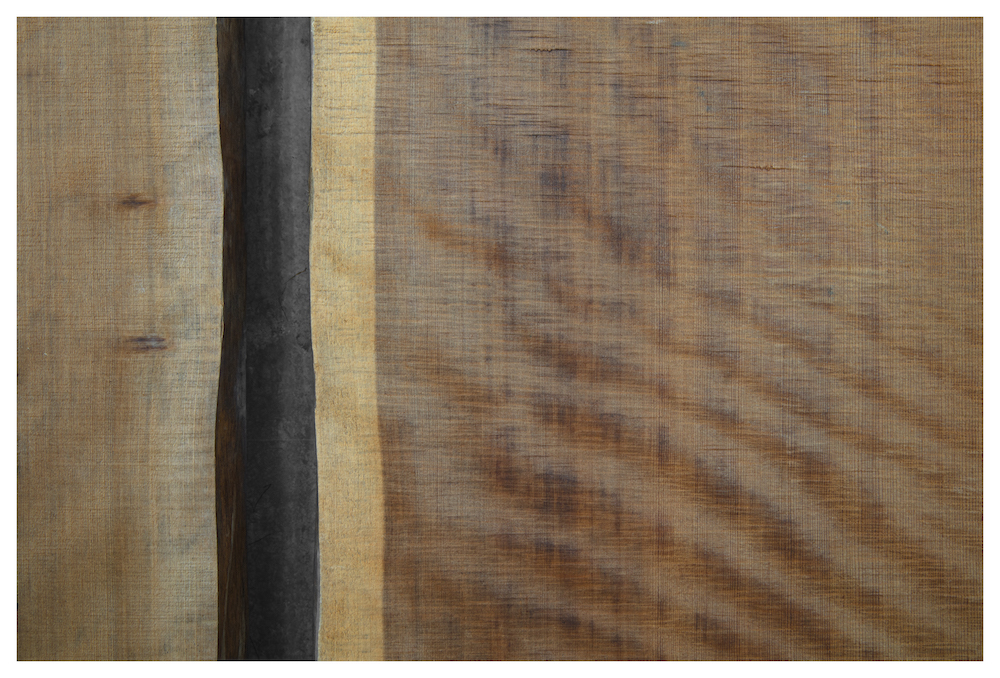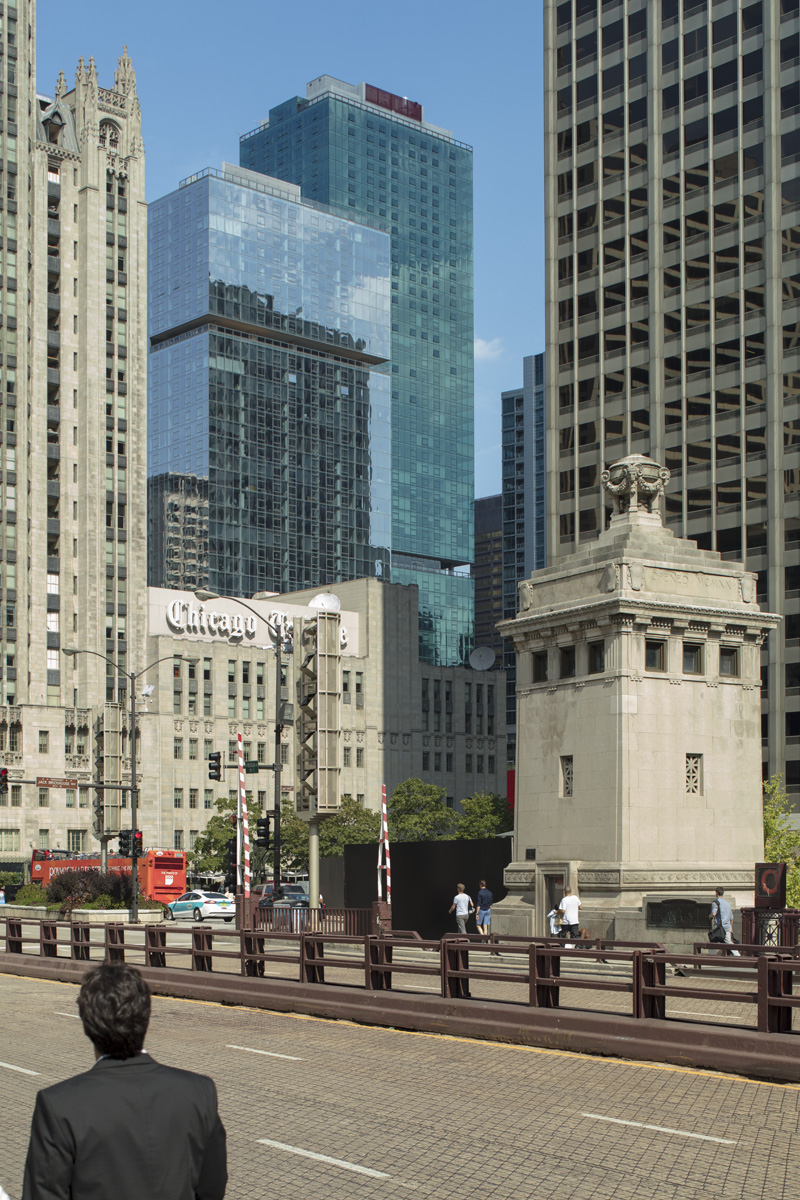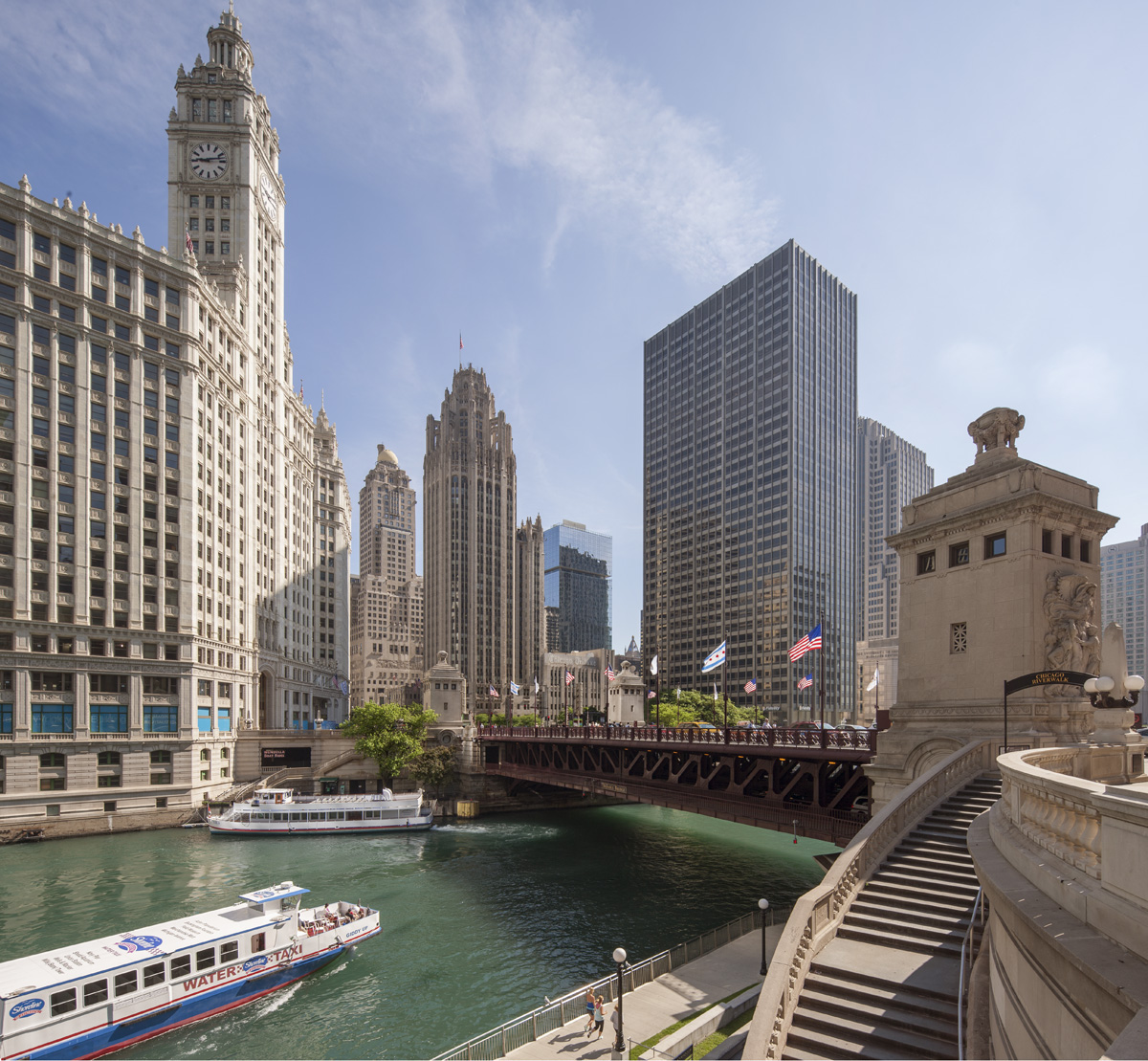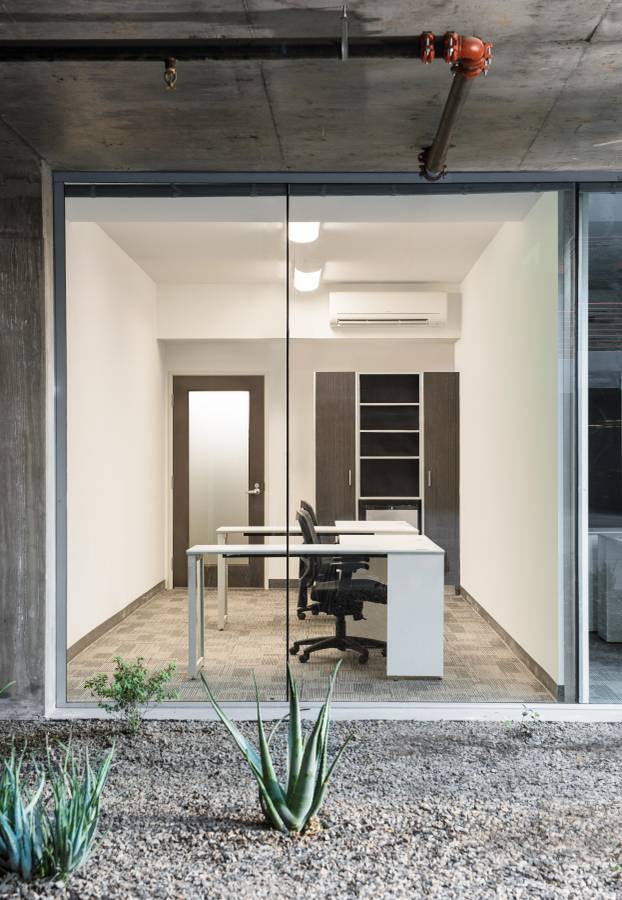In a dense urban area like Chicago, green space might look a little different. With all of our projects, we design our residences to welcome the outdoors indoors; at Optima Signature, that meant making sure residents could still get outside in the city. The green space at Optima Signature takes advantage of landscaping and contemporary, urban recreational design to embrace downtown Chicago living.
On the ground level, Optima Signature is surrounded by greenery with an inviting plaza. Lush landscaping features benches and seating areas, as functional for residents as they are for passersby or pedestrians. Kiwi, an original sculpture designed by David Hovey, Sr., adds visual movement and a playful quality to the entrance of the building.
Once inside, Optima Signature features an impressive 1.5 acres of amenity space, many of which are designed to bring residents outdoors. Heated swimming pools, outdoor terraces, herb gardens for resident use, fire pits and outdoor entertaining all contribute to making residents feel as if they’re in an outdoor oasis in the middle of the city. Strategic landscaping, plants and trees ensure a sense of privacy, despite sharing the amenities with other residents. Designed for residents in all walks of life, Optima Signature also includes an outdoor dog park and play areas for children (although there are indoor options for when the Chicago weather inevitably turns cold). In a concrete jungle, Optima Signature brings residents a bit closer to nature.
When moving to a city, many assume they’ll have to give up access to generous outdoor space. The residences, amenities and green space at Optima Signature offer the best of both worlds, all within a beautifully designed, Modernist tower that overlooks Chicago’s energetic downtown.
